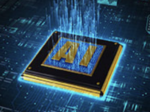Cadence Design Systems, Inc. announced the new Cadence Voltus InsightAI, the industry’s first generative AI technology that automatically identifies the root cause of EM-IR drop violations early in the design process and selects and implements the most efficient fixes to improve power, performance, and area (PPA). Using Voltus InsightAI, customers can fix up to 95% […]
Artificial Intelligence
If you are working with video signal processing here are some tools to consider, part 2
Computer and machine vision based on video signal processing and analysis is a critical function in systems like autonomous vehicles, medical imaging diagnostic equipment, facial recognition and eye tracking applications, smart cities, supply chain management, and robotics. It requires rapid and accurate object and feature recognition and extraction. Implementation of computer vision is complex and […]
If you are working with video signal processing here are some tools to consider, part 1
Computer and machine vision based on video signal processing and analysis is a critical function in systems like autonomous vehicles, medical imaging diagnostic equipment, facial recognition and eye tracking applications, smart cities, supply chain management, and robotics. It requires rapid and accurate object and feature recognition and extraction. Implementation of computer vision is complex and […]
Custom design platform now includes generative AI technology
Cadence Design Systems, Inc. announced the new Cadence Virtuoso Studio, a next-generation custom design platform that delivers an optimal design experience and ushers in the future for custom analog design. Virtuoso Studio features a reimagined infrastructure with a unique approach to managing design processes and allows more than a 3X improvement in design throughput for […]
What AI can bring to PCB manufacturing
by Ken Ghadia, Sales Engineer, TechnoTronix The introduction of Artificial Intelligence (AI) in PCB manufacturing has largely improved the product quality, optimized the production process, and significantly reduced the manufacturing cost. AI drives independent automation of PCB production by using the vast data aggregated from several sensors. Machine learning and deep learning are the AI sub-domains […]
Hardware-assisted verification technology in the mainstream
By Jean-Marie Brunet, and Dr. Lauro Rizzatti, Siemens EDA Today, system-on-chip (SoC) devices permeate our world and propel numerous industries. They are integral for the internet of things (IoT), to power up complex 5G/6G wireless applications, sit at the core of artificial intelligence/machine learning (AI/ML) algorithmic processors, drive powerful data center computers and storage devices, […]
Class-D stereo amplifier drives 12 W and 4Ω speakers
Diodes Incorporated introduces the PAM8965 Class-D stereo audio power amplifier with an integrated synchronous boost converter. This high-efficiency device is targeted for use in AI-enabled speaker systems and portable musical instruments – where elevated output power, extended battery life, and compact construction are all key requirements. Running off a 2.8V to 8.5V supply, the PAM8965 has […]
What is pseudorandomness and why is it useful?
Pseudorandomness is a measurement of the degree to which a sequence of numbers, though appearing to be random, is produced by a deterministic and repeatable process. True randomness is a stochastic quality of a sequence which has a probability distribution or pattern that may be analyzed statistically but may not be predicted precisely. Pseudorandom sequences […]








